If you’ve ever seen an antique spinning wheel abandoned in your great-aunt’s attic or at a garage sale, you’d know how cool they are! Once a common sight in every household, the spinning wheel is now a rare find. But lots of enthusiasts are still interested in them – for their beauty, history, and of course, value.
If you’re lucky enough to have found an old-fashioned spinning wheel or considering buying one, here’s a guide to help you with the basics of identification and value.
Table of Contents
Understanding an Antique Spinning Wheel
To the untrained eye, an antique spinning wheel may just look like a jumble of wood. But it’s actually a very intricate and well-designed machine. And to identify and value an antique spinning wheel, you must know what all its parts are and what they do.
This youtube video provides a great overview of the parts of an antique spinning wheel:
Here’s an overview of how a spinning wheel work:
The most basic spinning wheel is composed of these parts:
- Drive Wheel
- Flyer & Bobbin
- Mother of All & Maidens
- Treadle & Footman
The drive wheel is the large wheel you see at the base of the device. It provides momentum and makes it easier to spin the thread. The flyer is the part of the spinning wheel that twists the wool or thread. It’s attached to the drive wheel with a band or cord. The bobbin is a small cylinder that collects the thread. It’s placed in the flyer and revolves around it as you spin.
The mother of all is the central shaft that the drive wheel and flyer are attached to. The maidens are the supporting arms extending from the mother of all. They help keep the flyer in place. The treadle is a wooden bar, usually near the ground, that you press down on with your foot to make the wheel spin. The footman is the shaft that connects the treadle with the wheel and makes it spin when you press down on the treadle.
To spin the wool, you have to feed it through the orifice (the small hole in the flyer) while holding onto the end of the thread with your other hand. As the wool is fed through, you spin the wheel with your foot to give the flyer momentum.
The twist from the flyer is then transferred to the wool, which twists the fibers together and creates a thread. The speed of the wheel and the tension on the wool will determine the thickness of the thread.
History of the Spinning Wheel
The origin of the spinning wheel is pretty vague. Some experts believe it was first invented in China, while others claim that it originated in India. Some theories claim that Muslim weavers in Iraq invented it. But there’s no definitive evidence to give one theory more credence than the others.
What we do know is that the spinning wheel has been around for centuries – there’s evidence of its existence as early as the 9th century. The first Chinese illustration of a spinning wheel dates back to the 13th century (1270 AD). But they must be using it well before that.
Another clear early reference to the spinning wheel is the illustration from Baghdad, drawn in 1237. The first confirmed Indian references to the spinning wheel date back to 1350, in a Muslim historian’s book, Futuh-us-Salatin.
The spinning wheel then quickly made its way to Europe, appearing in France by the end of the 13th century. There are also references to spinning wheels in England by the 14th century. By the 1500s, the spinning wheel was a common sight in households across Europe. It evolved from its early incarnation and took the shape of the ‘walking wheel’ or ‘great wheel’ that we’re familiar with today.
In the early 16th century, someone in China added the bobbin and flyer to the spinning wheel, which made it much more efficient. Then pedals/treadles came in the 17th century, and these breakthroughs made it possible to produce large quantities of thread in a short amount of time.
In 1764, a British weaver James Hargreaves invented the spinning jenny, which could hold multiple bobbins at a time and thus increased productivity even further. The innovations kept coming, and in 1769, Richard Arkwright patented the water frame, a machine that could be powered by water (and later by steam). Hence, the spinning wheel’s end began, at least in the western world.
By the mid-19th century, factories were using large machines to mass-produce thread and yarn, making the antique wooden spinning wheel obsolete. Today, spinning yarn is just a hobby for people who appreciate the simplicity and beauty of this old device.
Antique Spinning Wheel Identification
In their prime, spinning wheels were all over the world. And every region had its own take on the design, based on the materials available and the needs of the local population. So there are literally hundreds of different variations of antique spinning wheels out there.
To make things a little easier, we usually divide them into four main categories:
The Great Wheel
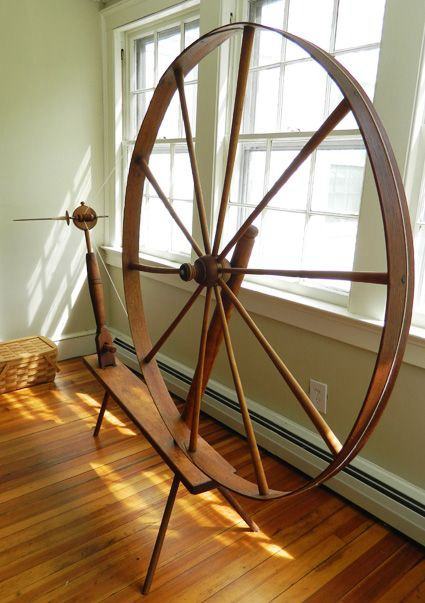
The great wheel is the oldest and least efficient spinning wheel. It’s recognizable by its disproportionally large drive wheel and fairly simple construction. It’s also called a walking wheel because you have to walk back and forth to adjust the thickness and tension of the thread.
The great wheel is usually set up on three legs and is hand driven, so it doesn’t have any treadles. And there is also no flayer – so you have to hold and collect the thread with your hands while also spinning. This simple mechanism only allowed spinning coarse woolen threads.
The Saxony Wheel
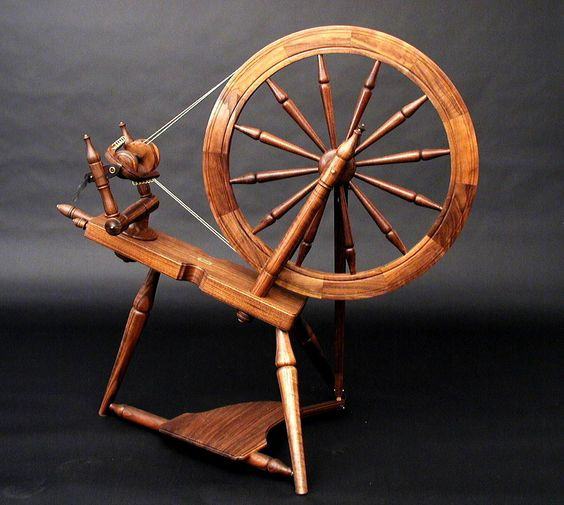
The Saxony wheel was invented in Germany in the early 1500s. Some notable difference improvements from its ancestors are the addition of a flyer, foot pedal mechanism, and double drive wheel. The spinner can now sit while spinning and has double drive bands to control the thread’s thickness and tension. So this wheel could spin threads for both fine linen and coarse woolen fabrics.
This wheel also sits on three legs and has a horizontal, slightly slanted assembly. One popular variation of the Saxony wheel is the Norwegian wheel, which has a flat table frame with four legs.
Norwegian spinning wheel: https://pin.it/2KTOB0u
The Charkha
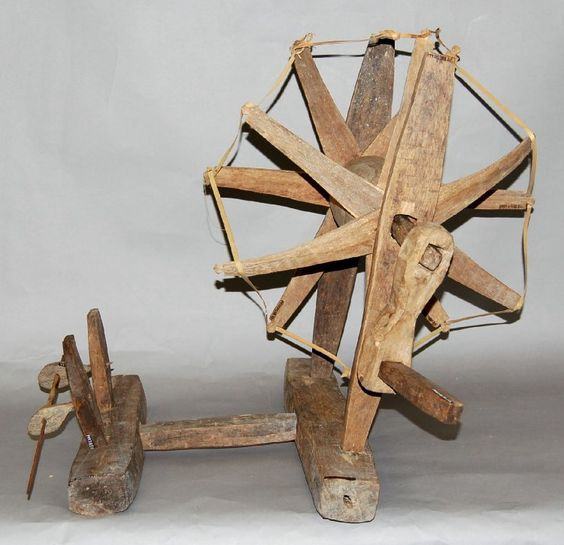
The charkha is a small, hand-powered spinning wheel invented in India. It’s similar in design to the great wheel but much smaller and more lightweight. Like a great wheel, it doesn’t have a flayer or bobbin, so the thread has to be collected by hand on a spindle. It is suitable to spin cotton and other fine fibers.
Charkha can be floor or table-mounted. Box charkha is an extremely portable variation that can be folded and carried around.
The Castle Wheel
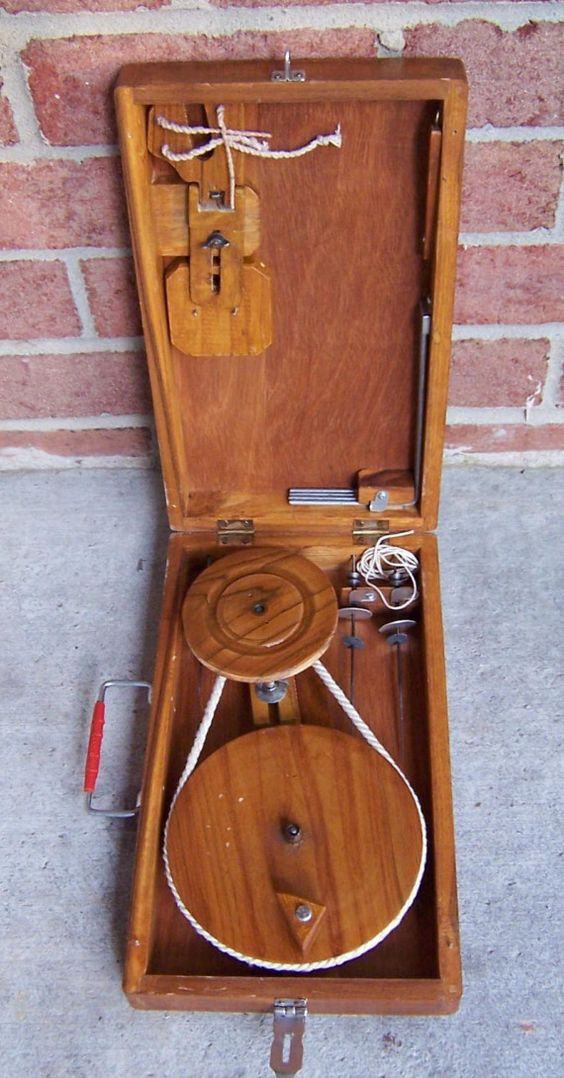
The Castle wheel is an Irish variation of the Saxony wheel. It’s recognizable by its upright assembly. The drive wheel is shifted in the middle of the frame, and the flyer and bobbin are on top. This design made it easier for the spinner to see the thread while spinning and thus produced a more even yarn.
The castle wheel is usually smaller and more compact than other designs. It’s easy to move around and could be used in small spaces like cottages. There are several versions of this wheel with different construction styles.
Spinning Wheel Vs. SWSO (Spinning Wheel Shaped Objects)
While looking for spinning wheels, you may come across another category called SWSO; ‘spinning wheel-shaped objects.’ These are NOT actual spinning wheels but decorative objects resembling one.
Spinning wheel-shaped objects (SWSOs) were very popular in the late 1900s, especially in Canada. They were often given as gifts and used as decor in homes. But they don’t spin and are not functional in any way. If you’re looking for an antique spinning wheel to actually use – make sure it’s not an SWSO!
Though most SWSOs are fairly easy to spot, a wrongfully labeled spinning wheel does pop up on the market from time to time. So if you’re unsure, ask an expert or do some more research before making a purchase.
A miniature doo house spinning wheel:
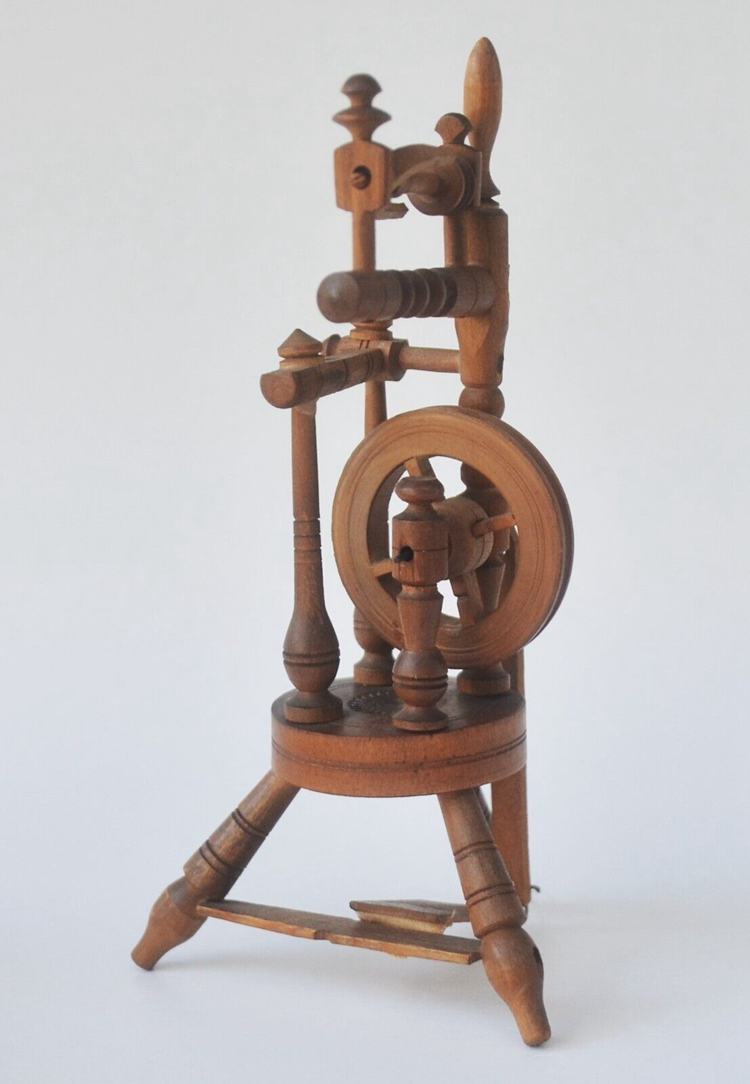
How to Date an Antique Spinning Wheel
Now that you know the different types of antique spinning wheels let’s find out how to ensure you’re getting a genuine antique. Here are some tips on how to date an antique spinning wheel:
Examine Construction Technique
Antique spinning wheels can be centuries old when every single part was handmade and assembled using primitive joining methods. So take a close look at the construction, especially any parts that are held together with wood pegs or iron nails. If it looks too perfect – it’s probably a reproduction.
But machine-cutting became common in the mid-19th century. So apart from construction techniques, also scan the decorative carving or other embellishments. They should be age appropriate and in line with the style of the spinning wheel.
Check the Materials & Finish
Early spinning wheels were entirely made of wood – even the pegs, flyer, and whorl. But as technology progressed, some parts were replaced with metal or other materials. Cheaper materials like plywood and plastic are a clear sign of a more recent spinning wheel.
The wood finish is another clue; 18th century and earlier wheels were often painted or had an oil finish. The shellac became popular in the late mid-18th century followed by varnish and lacquer in the early 20th century.
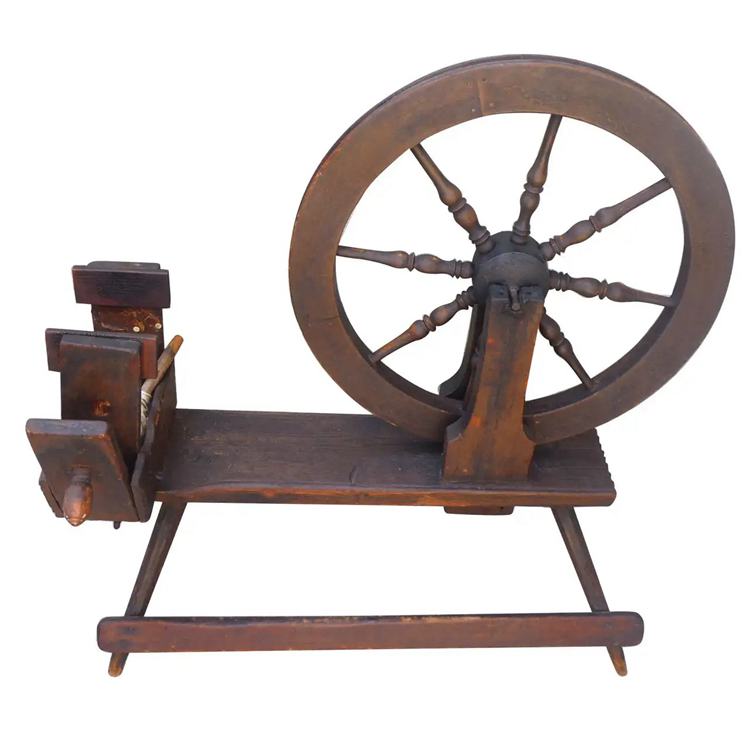
Establish Provenance
If you’re lucky enough to know the spinning wheel’s history – that will help you date it quite accurately. But even if you don’t have that information, try to find out as much as possible about its previous owners. Who used it and when? Was it passed down through the family, or did they buy it at an auction? Knowing these details will give you a general timeline to work with.
Signs of Aging
Age leaves its mark on wood and a well-used spinning wheel shows obvious signs of wear and tear.
Use a bright light and magnifying glass and look for:
- Fine cracks in the wood called, ‘crazing.’
- Nips, chips, and scratches on the wood surface.
- Water stains, heat marks, or wood that’s discolored from age.
- Insect damage
- Also, check for any repairs or replacements; a replaced part will usually be a different color or texture than the rest of the wood.
If you’re unfamiliar with antiques, it’s always best to communicate with a professional to ensure the aging signs are genuine and consistent with the age of the item. Often, damage from neglect or poor storage can be mistaken for aging signs.
Check for Inscriptions or Markings
Some spinning wheels – especially those made in the late 19th century – have marks that can help date them. These include antique spinning wheel makers’ marks, trade labels, retailer marks, and even owner’s initials. They can be stamped, carved, or painted on different parts of the wheel.
If you find any markings – do some research to see if you can identify the maker or date.
Jesse Truesdell, a famous 19th-century maker from Newark valley, marked his wheels with his initial ‘J. Truesdell.’ His stamped pieces are highly sought after by collectors.
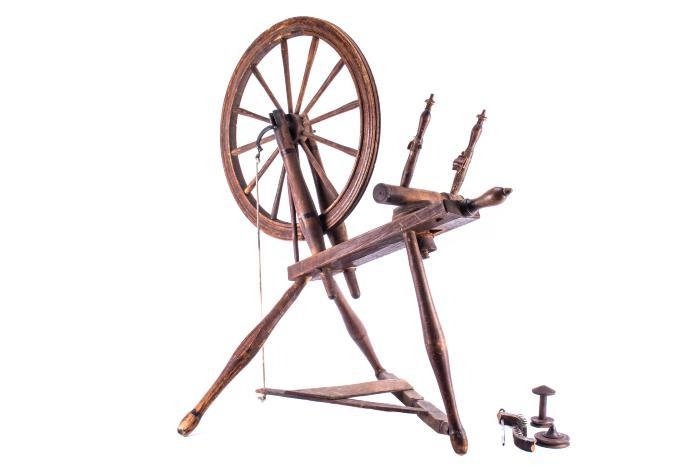
Estimating the Antique Spinning Wheel Value
Now that we have all the necessary information, it’s time to talk value. Estimating the value of an antique spinning wheel is not an exact science, but there are some general factors you can keep in mind.
Here are some things to consider when estimating the value of an antique spinning wheel:
1. Is it Rare?
A one-of-a-kind piece or a spinning wheel by a well-known maker will be worth more than just a normal antique spinning wheel. But should have an established provenance to back up its value.
Why it’s rare – whether it’s the maker, the materials, the age, or some other factor, every claim has to be substantiated with proper documentation or expert opinions.
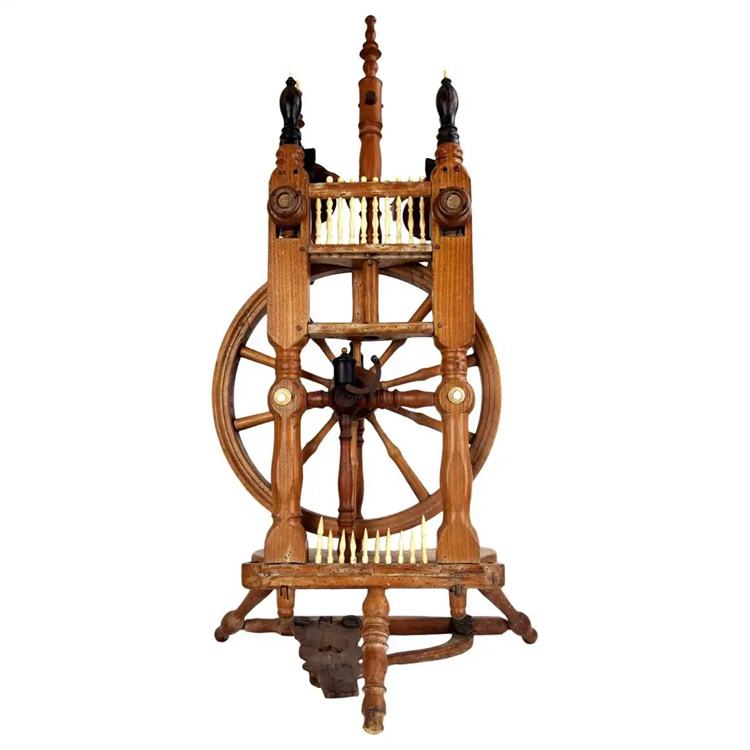
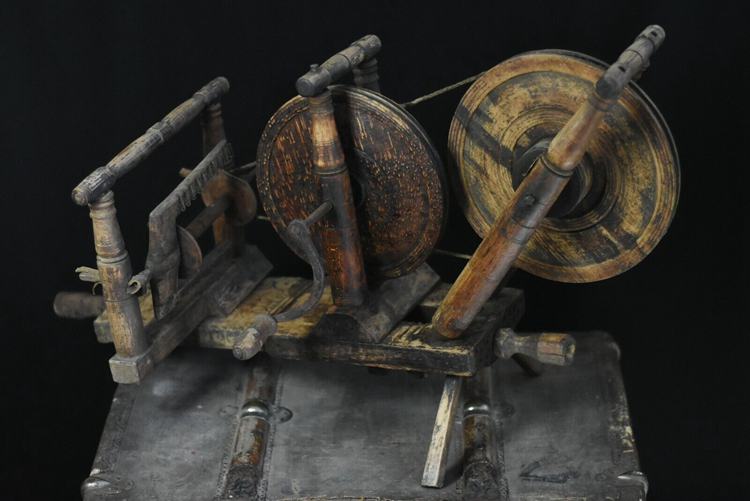
2. Is it in Working Condition?
An antique spinning wheel in working condition is obviously worth more for spinners. And you can’t call a spinning wheel “in working condition” just because the treadle goes up and down. All the parts need to be in good condition, and they should actually spin yarn. If the wheel is not in good form or missing parts, you’ll need to factor in the restoration cost.
Sellers often try to inflate the value of a spinning wheel by saying it’s “in working condition.” That’s why you must understand how spinning works and inspect the wheel carefully before buying it. Ask the right questions to ensure you get a functional antique spinning wheel.
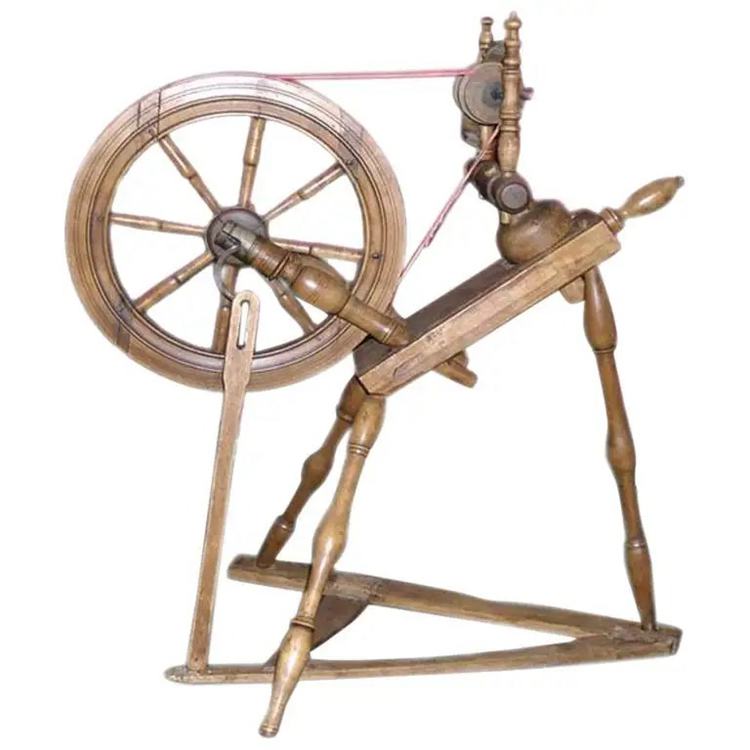
3. Can it be Restored? The Extent of the Restoration Needed?
If a spinning wheel is in bad condition, you might be able to restore it to its former glory. But that takes time, money, effort, and a level of skill most people don’t have. So you have to weigh the cost of restoration against the potential value of the restored spinning wheel.
Also, consider the availability of replacement parts. A missing maiden is often fairly easy to replace. But if the flyer is broken or the wheel is cracked, that’s a whole different story. You might have to find someone who can custom-make a replacement part, which will be expensive.
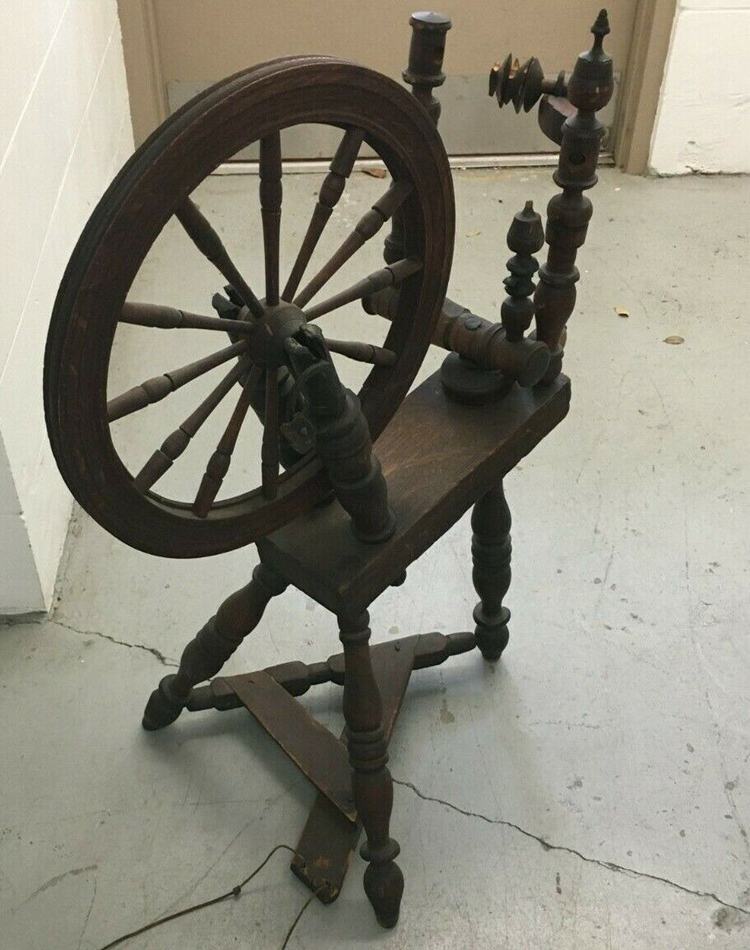
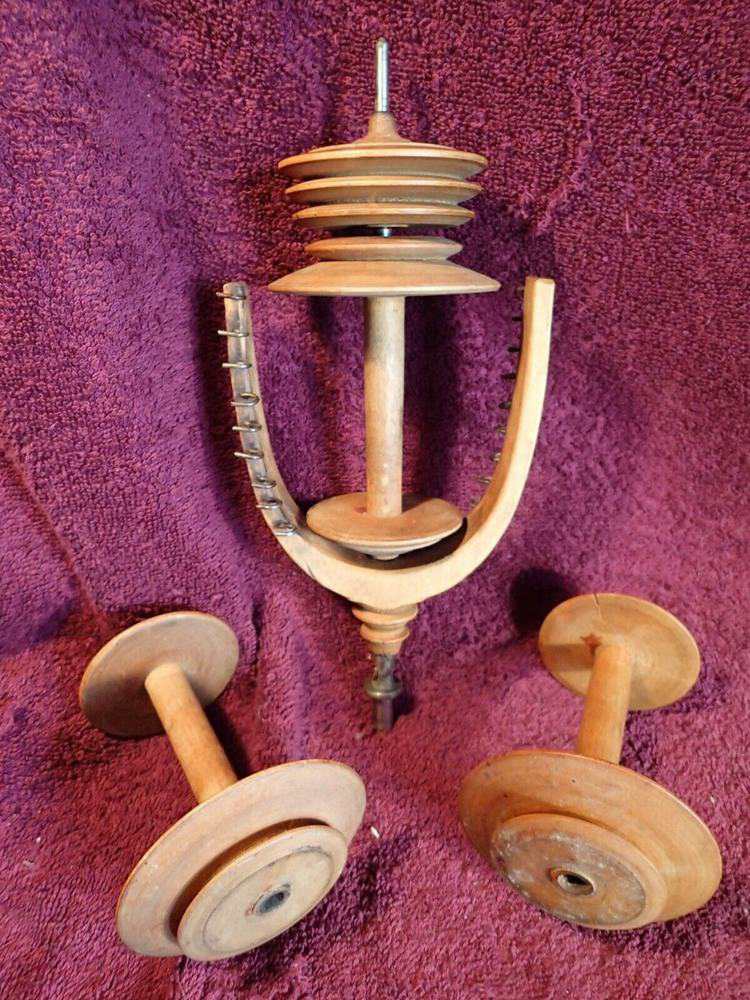
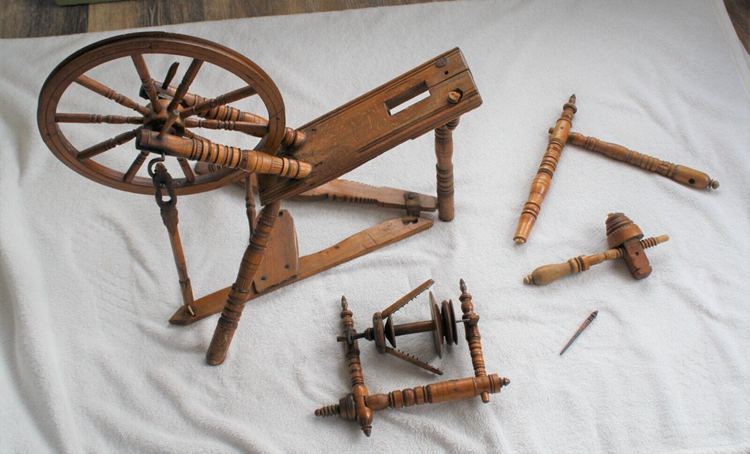
4. What is the Overall Aesthetic Appeal?
This is a bit subjective, but aesthetics do play a role in value. Some collectors will be fine with rustic, unvarnished wood. Others want pristine, polished pieces, especially if they’re going to display the spinning wheel somewhere. So it really depends on the buyer. However, it’s a good idea to thoroughly clean it and make it look as presentable as possible before you sell it.
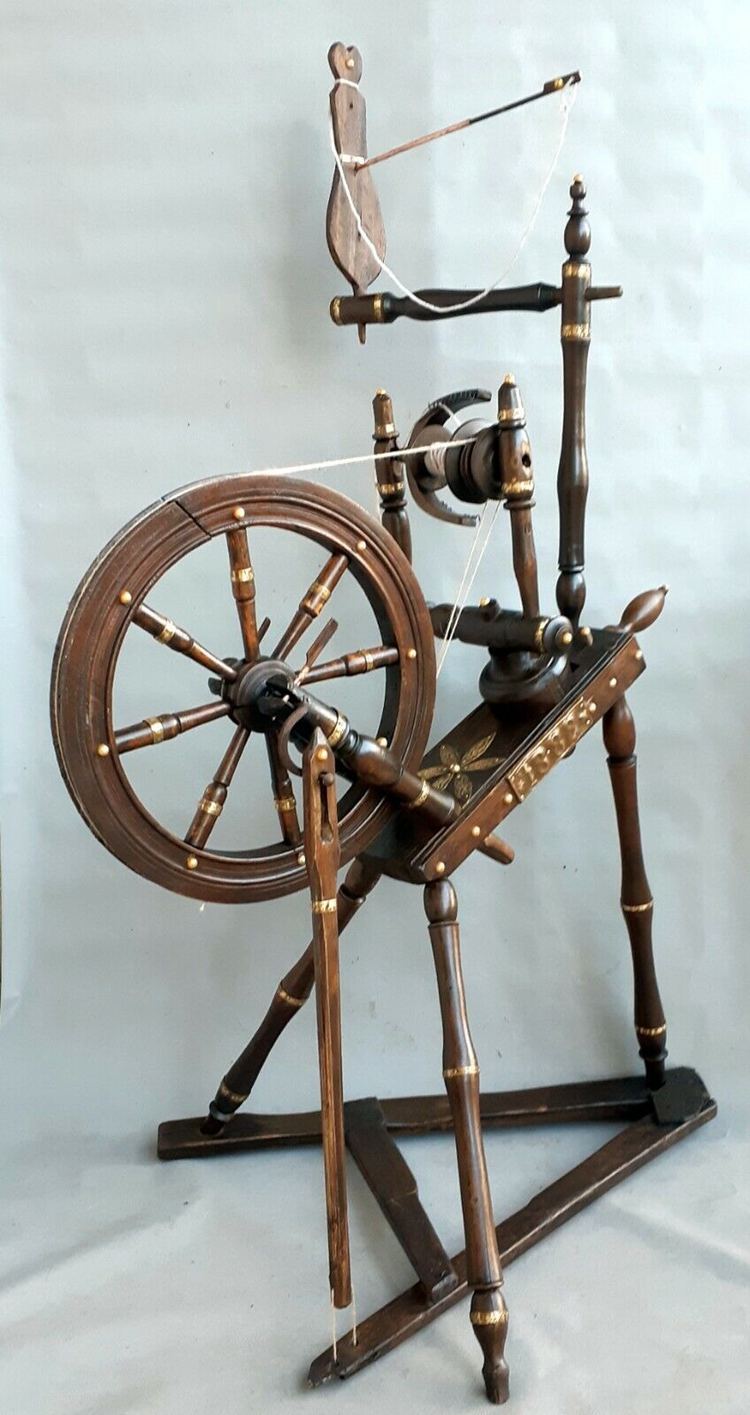
The level of detail and craftsmanship is also a big factor. The more intricate and well-made a spinning wheel is, the more valuable it will be.
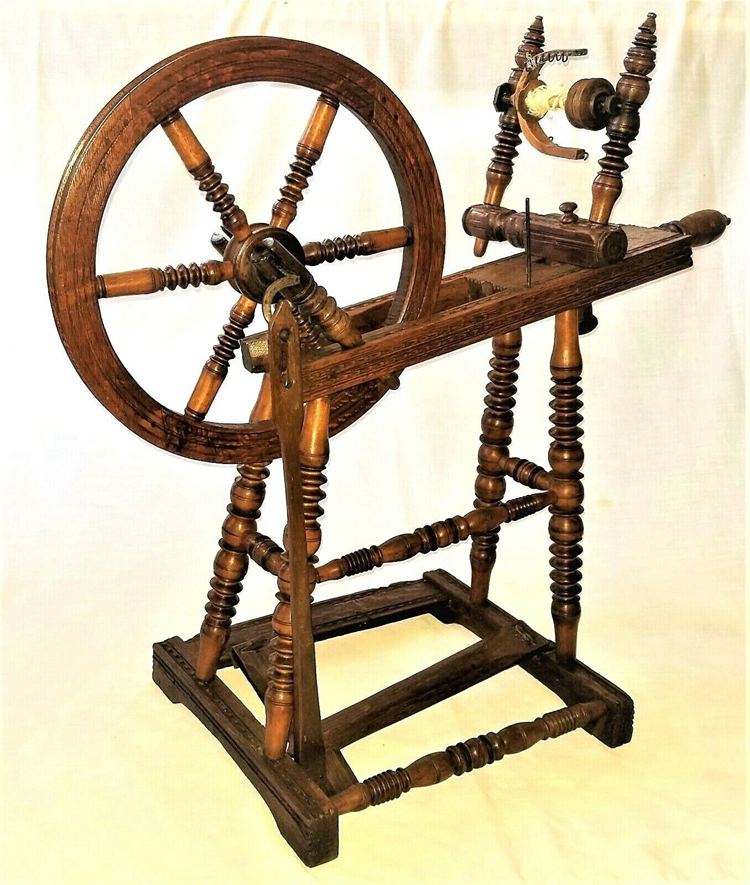
5. Who made it? Any Historical appeal?
As we mentioned before, some makers are more well-known than others. And their spinning wheels usually sell for a higher price as a result. But even if you don’t have a famous maker, you might still be able to capitalize on the piece’s history. Any stories or information about previous owners, where it was used, etc., can add to the appeal (and value) of the piece.
6. Symbolism or any other Special Significance?
Spinning wheels have been part of human culture for centuries, and they often have a special meaning attached to them. Some cultures see them as a symbol of wealth or prosperity. In others, they’re seen as a symbol of hard work and humble beginnings. Either way, this can add to the value of a spinning wheel.
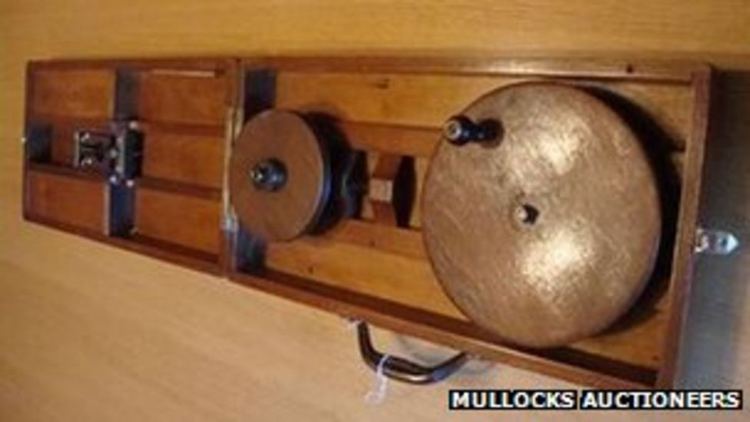
Such pieces aren’t easy to come by and are already owned by museums or private collectors. But if you’ve come across something truly unique or special, it could be worth a lot of money.
Remember, there are a lot of factors that go into determining the value of an antique spinning wheel. Even an appraiser may not be able to give you a definitive answer because of so many variations. So it’s important to do your research and get a feel for the market before you buy or sell. With a little effort, you should be able to get a pretty good idea of what your spinning wheel is worth.
Conclusion
The spinning wheel is often underestimated because of its simplicity, but it is one of the most ubiquitous pieces of equipment in history. It is a tool that has been used for centuries and has been an important part of many cultures.
If you’re a spinner, an antique spinning wheel can be a beautiful and functional addition to your studio. But even if you’re not, they can be a great addition to your art collection and a centerpiece in your home.
Takeaways:
- The spinning wheel dates back to at least the 9th century and was likely invented in China or India.
- Antique spinning wheels are intricate machines composed of a drive wheel, flyer, bobbin, mother of all, maidens, treadle, and footman.
- To spin yarn, you have to feed wool into the orifice, twist it with your hands, and then use the treadle to spin the wheel.
- There are many different types of antique spinning wheels depending on their region of origin.
- Spinning wheel-shaped objects (SWSOs) are decorative objects that resemble spinning wheels but don’t actually function.
- An antique spinning wheel will be made from natural materials, put together with primitive construction techniques, and show signs of wear.
- A rare spinning wheel with a historical appeal or associated with a famous person can be worth a lot of money.
- An antique wheel with all original parts and working order is worth more than one that needs to be restored.
- The value of an antique spinning wheel also depends on its aesthetic appeal.





![Where To Sell Antique Furniture In 2022 [Ultimate Guide]](https://www.jacquelinestallone.com/wp-content/uploads/2022/09/Etsy-Your-Place-To-Buy-And-Sell-All-Things-Handmade-600x450.jpg)


